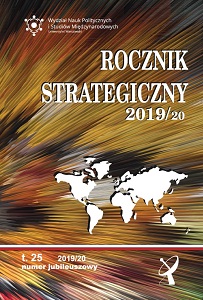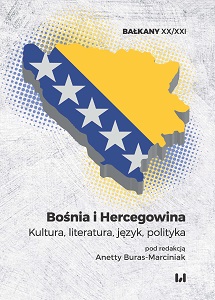
We kindly inform you that, as long as the subject affiliation of our 300.000+ articles is in progress, you might get unsufficient or no results on your third level or second level search. In this case, please broaden your search criteria.


The consequences of the 1989 political transformation for science in Poland arepresented on the example of research in the area of high-energy physics.
More...
This article studies path-breaking economic developments in Poland followingthe start of the systemic transformation in 1989. Three groups of countries are usedfor comparative analysis: those economically most advanced, those less developedbut striving to catch up during the last 30–40 years, and as a subgroup of the latter,the transition economies. The article has three objectives. The fi rst is to show that manyopinions regarding major aspects of the Polish transformation are at variance with plainstatistical facts. The second is to evaluate the pace and the extent of progress so farin the eff ort to narrow the income and wealth gaps between Poland and most developedcountries, particularly the pre-2004 members of the European Union. The third consistsin a discussion of factors which are likely to impede the pace of Poland’s economicdevelopment in the years to come.
More...
The aim of the text is to analyze the main goals and strategies of cultural politicsin Poland in the period 1989–2019. The most important tendencies observed arethe contradictory actions taken by diff erent political authorities towards centralizationand de-centralization of culture’s management. These opposite tendencies representat least two major ways of looking at the fi eld of culture, which, on the one hand,is perceived as a political tool serving to create a sense of national identity, and onthe other, as an autonomous value which should be separate from all possible politicalinfl uences. The article analyzes the transition from the moment of the fi rst postcommunistre-discovery of artistic freedom to the present day, when right-wingpoliticians strive to replace culture’s management with history-based politics.
More...
The evolution of Polish defence policy and strategy after 1989 has had three mainphases. In the 1990s, the most important problem was the independence of Polishthinking and strategic practice after four decades of incapacitation in the conditionsof membership in the Warsaw Pact. The fi rst fi fteen years of the 21st century werea time of allied integration in NATO and the EU. Since 2014, there has been a periodof strategic adaptation to new security conditions, including hybrid threats, imposedby Russia’s confrontational policy towards the West. During this period there hasalso been a radical internal change in Polish politics related to the rise to powerof the Law and Justice party. The most important challenges in the fi eld of defencepolicy and strategy today are: ensuring a state rather than party approach to nationalsecurity, restoring international credibility, especially among NATO and EU allies,and repairing civilian and democratic control over the armed forces.
More...




In spite of the many life challenges they face on a daily basis, humor has never left Bosnians and Herzegovinians. Particularly during the most tumultuous times in Bosnia and Herzegovina’s history, such as the 1992–1995 war, humor served as a means of pursuing self-preservation and a higher purpose, by which at least for a moment they could combat against the horrors of war they were witnessing. Having little other means to cope with their situation, Bosnia and Herzegovinians showed that a sense of humor – the characteristic method of producing and perceiving jokes – could also inspire optimism, empathy and hope, especially today, when after surviving the war they needed to learn how to survive in peace. This paper discusses the issue of whether the serious and painful topic of the war in Bosnia and Herzegovina can be debated by overcoming spoken and written discourse with the help of irony and black humor in the form of jokes; whether or not there is a place for humor in describing the human tragedy and trauma caused by the war. Humor and laughter as recourse, through mockery instead of despair and self-pity over an unfortunate reality, impose themselves as the most appropriate way of dealing with the everyday problems that life brings.
More...
The paper offers an insight into some preliminary results of a more general literary-historical and textological research of Mak Dizdar’s manuscript heritage, first of all the poetry collection Stone sleeper, the most important author’s book and one of the most important books of Bosniak and Bosnian-Herzegovinian literature in general. Special attention is given to some key issues of history of the text of the Stone sleeper in the context of the author’s manuscript collection as well as to the modes of its textological historical-critical reading. Along with opening of new research perspectives, some key foundations for the preparation of a critical edition of Dizdar’s most important poetry book are laid in this way.
More...
The subject of the article is collection of Šejla Šehabović’s short stories A Plural Noun of Feminine Gender (Priče – ženski rod, množina) as an example of the women’s Bosnian (anti)war prose. The stories are interpreted by analysing trauma present in narratives, ways in which traumatic memories are remembered and how the memories are presented in a story. Particular attention is devoted to the narrative itself, which in many aspects is viewed as a form of articulation of trauma. The analysis focuses on the feminine perspective in war experience as well as its differences from previous predominantly masculine narratives. The article indicates the relationship between traumatic narrative, literature of testimony and women’s writing.
More...
Andrić’s short story, Pismo iz 1920 will be analyzed in this text. The story describes the encounter of a narrator (who doesn’t have a name) with his friend (from period of the childhood) Maks Levenfeld. Andrić’s story was often interpreted with regards to thesis which emphasizies an idea that Bosnia is country of hatred (that is the main thesis of Maks’s letter which is one part of the text). Such types of criticism often had an ideological motives and avoided to analyze complex nature of this literary text. In the basic structure of the story is the main motive which describes a relationship between a subject and authority (that fact, among others, confirms the existence psychoanalytic aspects in this text). The figure of authority is represented by Max Levenfeld’s character. Beside that Pismo iz 1920 is the story about growing up, and intellectual maturity and also story about the one’s attempts to be free from influence of authority. It is also a story about the art and its power to change reader’s point of view by ironic modus.
More...
In this paper author wrote about contemporary Bosnia and Hercegovina poetry for children. Themes are different and poets like Alija Dubocanin, Ivica Vanja Roric, Muahrem Omrevic, Bisera Alikadic, Ismet Bekric and others are writing about nature, family members, school, play, etc. Somteimes these children’s poems are more didactic, some poems are descriptive and some are more artistic.
More...
The paper presents the women’s writing in Bosnia and Herzegovina after 1990. The main representative authors of contemporary women’s literature are described. The most interesting questions and problems, the most frequently occuring topics are also analyzed.
More...
Bosnian-Herzegovinian heritage institutions share unique historical origin as, after all, is the case of many other heritage institutions, starting with their initial establishment in the ancient history. Today’s Bosnian-Herzegovinian heritage institutions’ convergence is resulting from their common historical origin, but it is also shaped by their later development trends regarding professional, legal and academic framework, all that followed by obvious influences of information and communication technologies of today. The paper follows parallelisms between important Bosnian-Herzegovinian national memory institutions – archives, libraries and museums – from their inception, establishment of professional, legal and academic framework to the complex social roles realizing today. Besides, their convergence is recognized as the most fruitful framework of their social activities, both in the past and today.
More...
The author analyzes a sample of approximately ten percent of entries from Škaljić (1966), a classic dictionary of Near Eastern loanwords in Serbo-Croatian, to determine the present-day status of these loanwords. The analysis demonstrates very clearly that a vast majority of these loanwords is out of use in standard language, replaced by non-Near- Eastern, mostly inherited Slavic lexicon (61.9% of the sample). Another sizeable group is defunct vocabulary given that the realities they refer to are not in use anymore (19.8 of the sample). Only a limited number of entries of 18.3% are still in standard language use, most of them (13.7% of the sample) restricted in some way (by the field of usage, register, etc.). These results serve as a correction in the comparison between the loanwords in Slavic languages, where it would seem that Near Eastern loanwords sharply divide Serbo-Croatian from Russian, Polish and many other Slavic languages. At the same time, they debunk nationalist myths about a special role of Near Eastern loanwords in separating ethnic variants of standard Serbo Croatian.
More...
The paper analyzes the status issues of the Bosnian language at the time of the Austro-Hungarian and Ottoman Bosnia. Synthetic, here are exposed the relevant facts about the Bosnian language and it’s social status, the official use, and it’s status in education and literature, with a focus on scientific development. In particular, we gain insight about the relationship between the Bosnian and Serbo-Croatian language in synchronic and diachronic approach.
More...
The paper presents some crucial similarities and differences between Bosniacs (slavonic Muslims) from Bosnia and from Kosovo (both in former Yugoslavia). The ethnonym Bosniac (Bošnjak), recently widely accepted among post-yugoslavian Slavs-Muslims, doesn’t need any explanation if used with references to the part of Bosnian population. The case of Goran Bosniacs demands however a more detailed approach.
More...
Bosnia and Herzegovina has existed as a sovereign state since March 1992. It was then that they proclaimed their independence, following the example of Croatia, Slovenia and Macedonia, which ultimately led to the disintegration of Yugoslavia and was one of the reasons for the outbreak of civil war. The economy that was destroyed in the 1992–1995 war has been still recovering. In the post-war years (1998–2008), there was a significant economic growth reported. The 2008 world crisis caused a slowdown in the economy of Bosnia and there was a very low increase recorded until 2014. In 2015, the economic situation started to improve. In the next year, the country applied for EU’s membership. In September, the application was approved and Bosnia became the EU associated country. Unfortunately, the years 2017 and 2018 brought another economic and political crisis. The article aims at presenting the current economic and political situation in Bosnia and Herzegovina.
More...